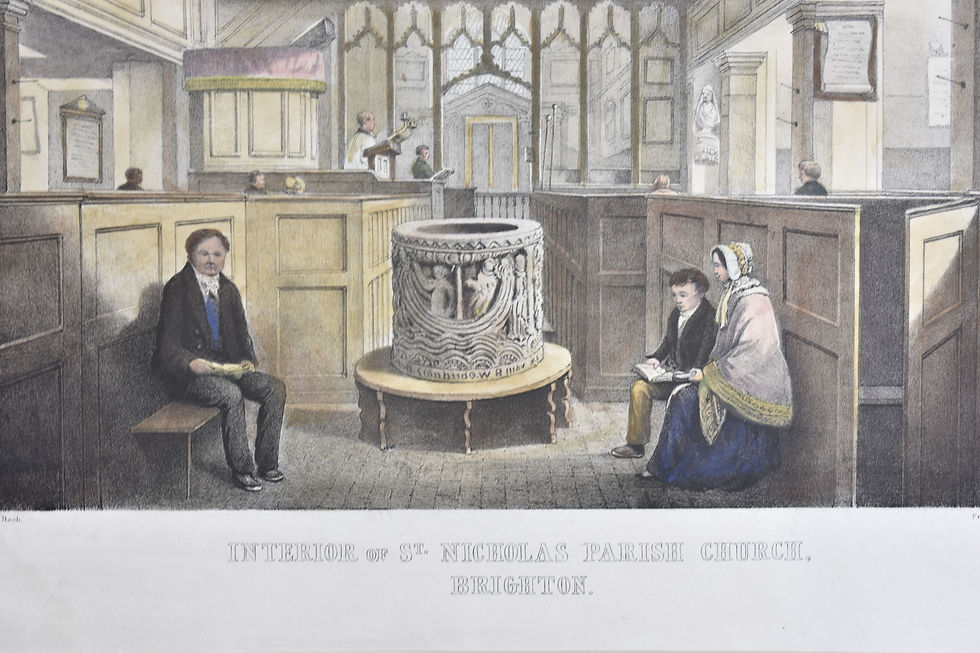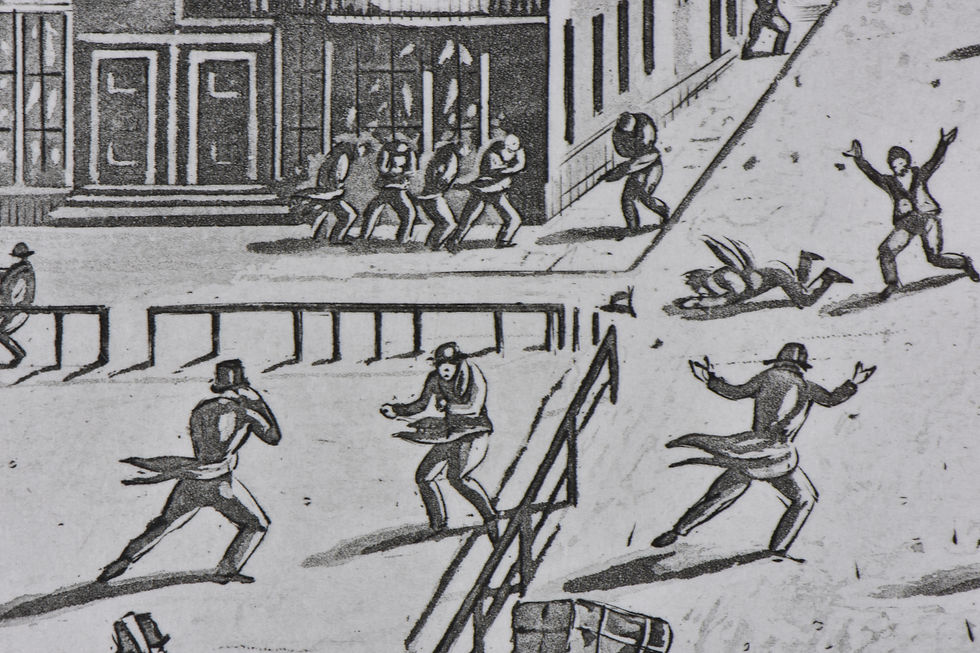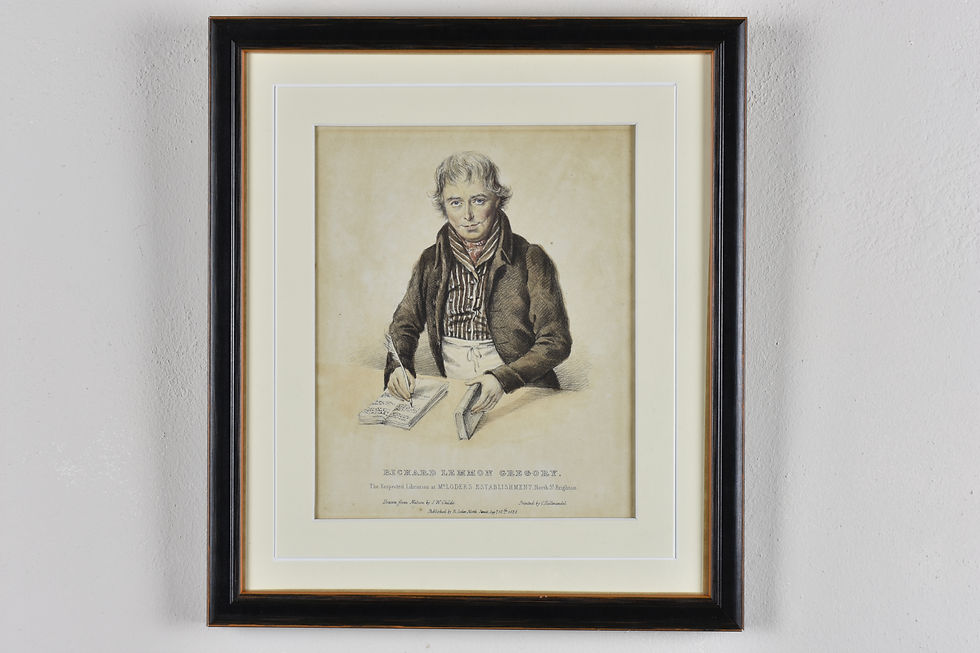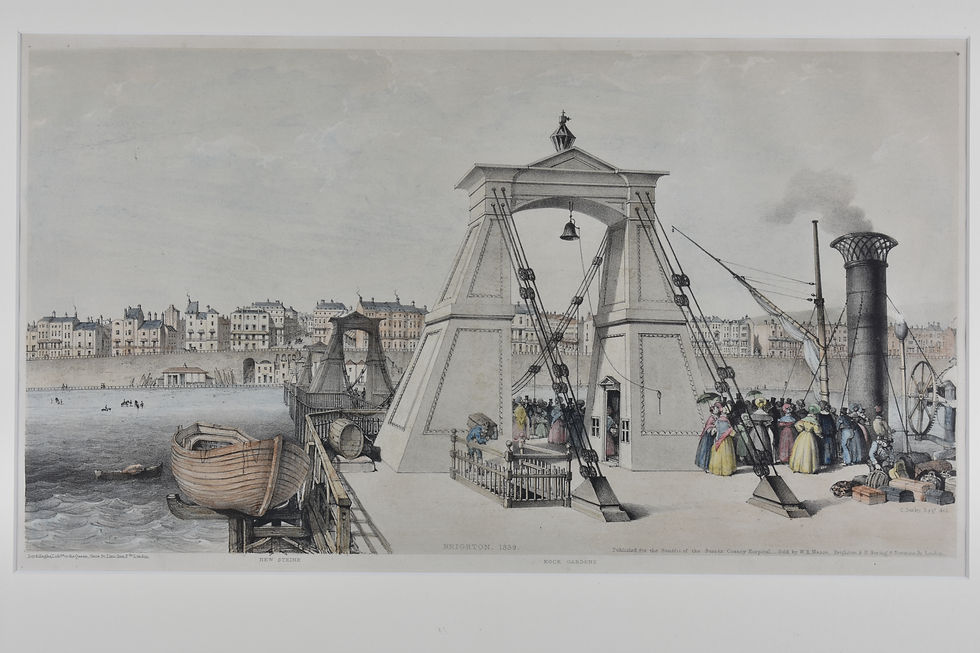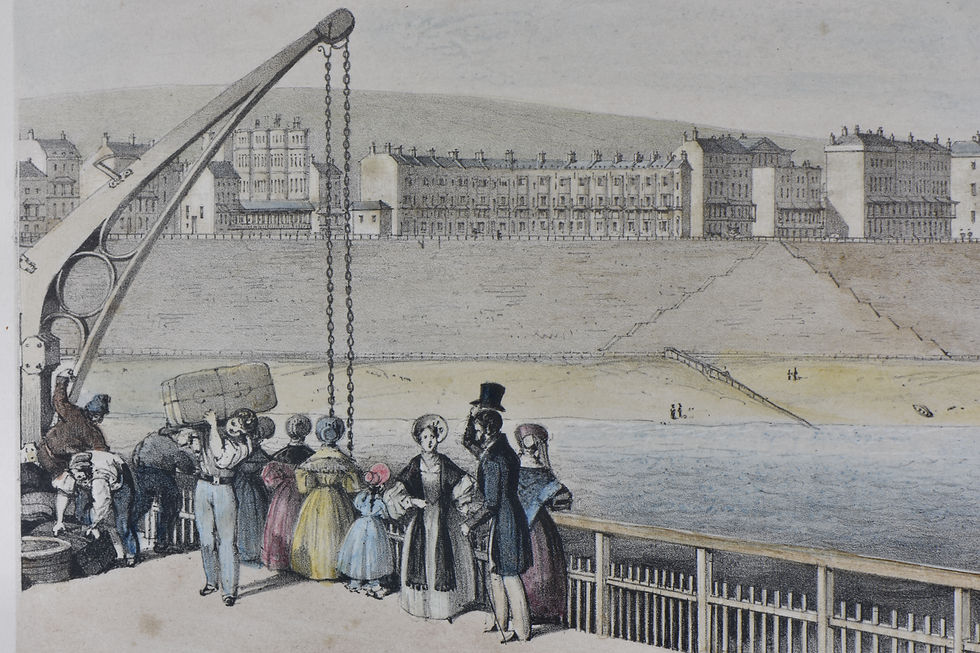Brighton, Lewes and Sussex
The majority of the prints here are of Brighton or Lewes. The prints of Brighton date from the mid 1780s when the popularity of Brighton, already a thriving seaside resort, was boosted by the regular visits of George, Prince of Wales and future George IV. The prints illustrate the various incarnations of Brighton Pavilion, actual and imagined, with examples of designs by Henry Holland, Humphry Repton and John Nash. Other rare early aquatints and etchings by Eleanor Lay show the Steine as it was in its early days, just after the first houses on its east side were built.
There are also a number of prints of the much-older Lewes, the county town of East Sussex. Lewes lies about eight miles north east of Brighton in a gap in the South Downs. After the Norman conquest a Castle and Priory were built by William de Warenne, one of William the Conqueror's barons. The Priory was demolished in the 1530s as part of the Dissolution of the Monasteries. Over the years the Priory fell into disrepair and was recorded in the eighteenth century as a romantic ruin by artists. In the nineteenth century the coming of the railway to Lewes led to the discovery of the burial cysts of William and Gundrada de Warenne. This, combined with a growing interest in historic building and sites from antiquity, resulted in the publication of a number of books in the second half of the nineteenth century which aimed to educate a growing reading public on the national importance of particular historical sites and buildings. Most of the prints of Lewes here come from this type of publication.























